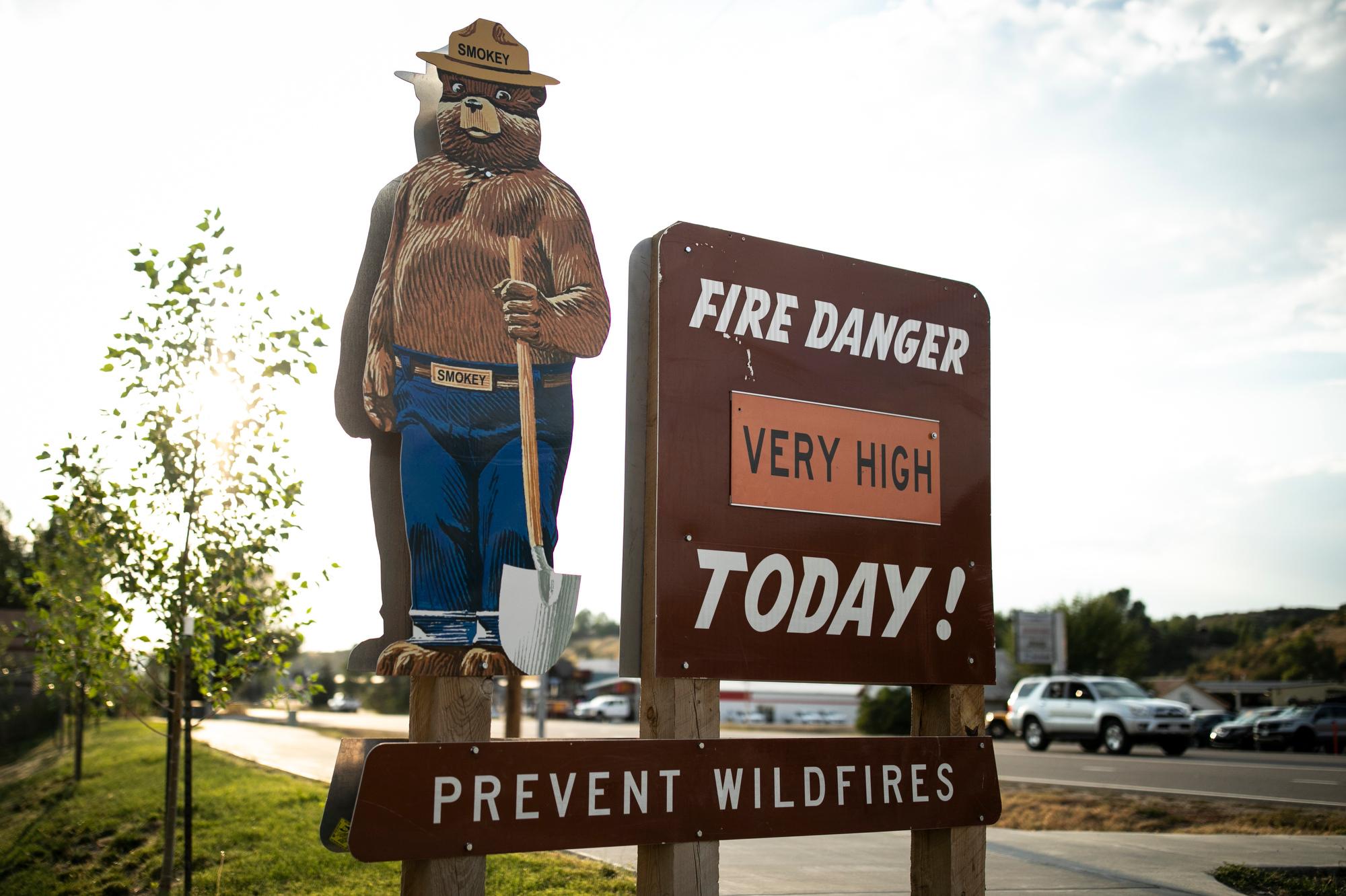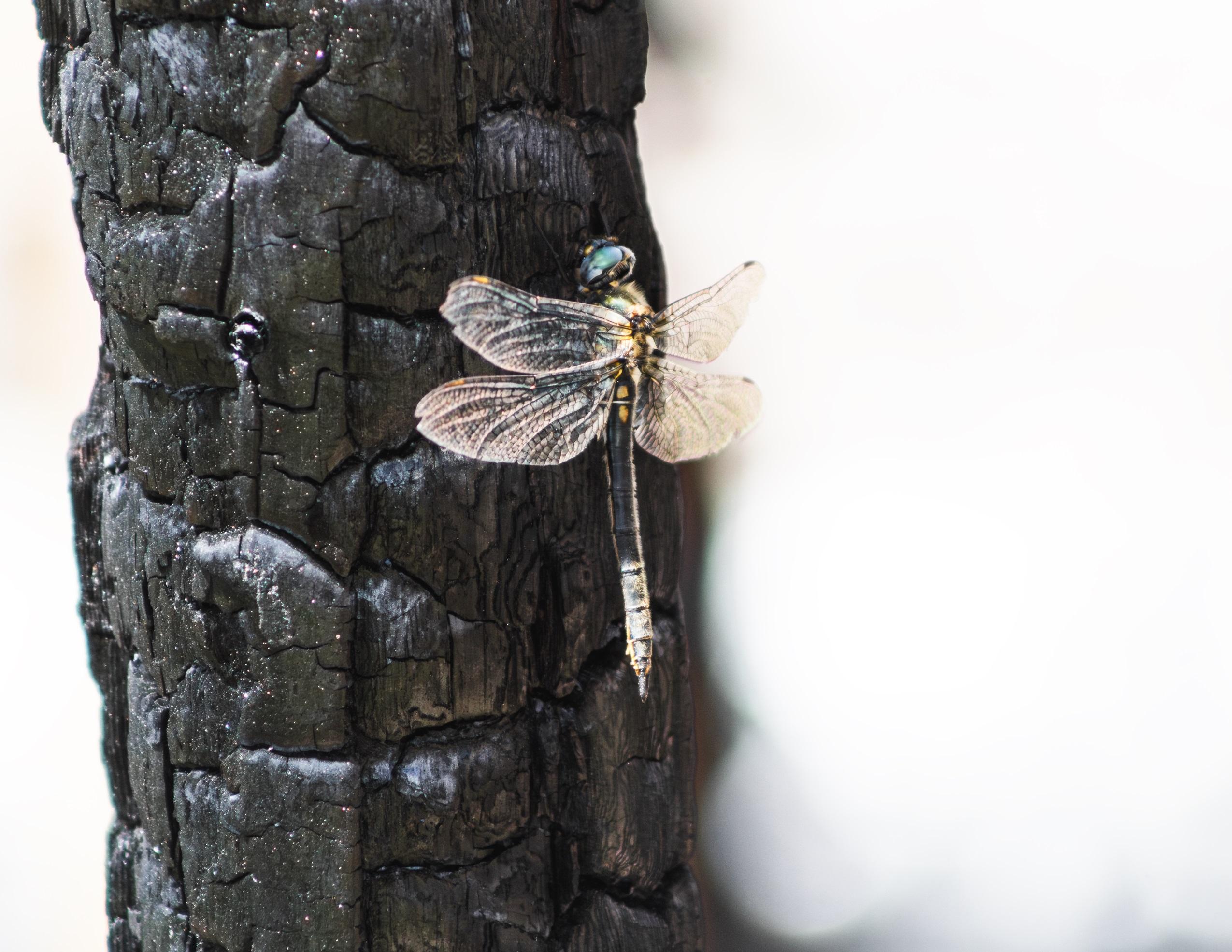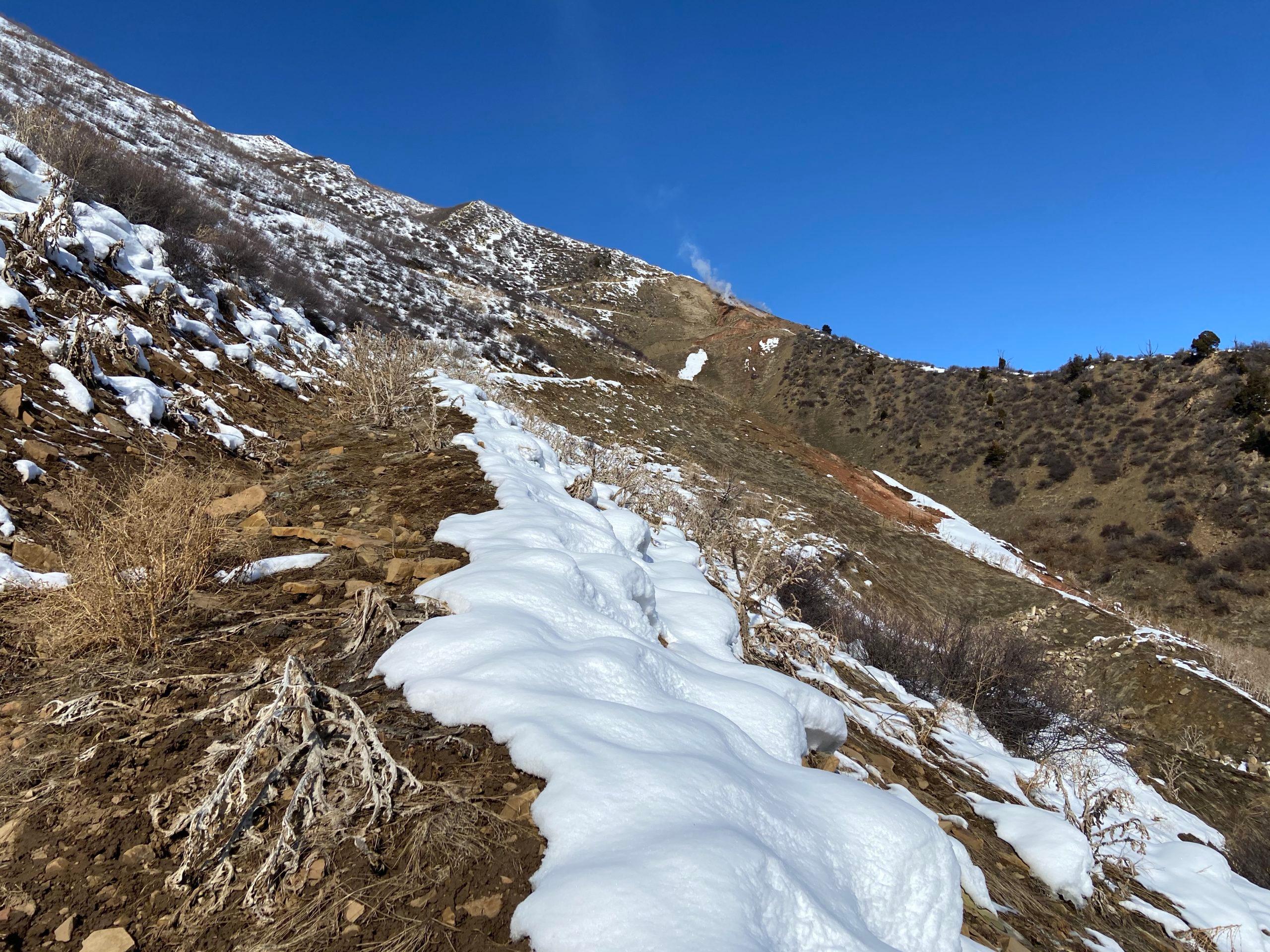
South Canyon near Glenwood Springs is a place you’d go to check out new mountain biking trails, or go on a hike.
It’s also a good place to spot underground fires in coal mines. That’s where coal seams can ignite, burning leftover coal deep underground.
How can you tell an underground coal mine fire? In winter, it’s easy. There’s telltale smoke rising from the hillside. Surface temperatures can be 1,000 degrees Fahrenheit. And this is not your friendly campfire. Underground fires belch toxic fumes.
In February, CPR hiked with Tara Tafi, a senior project manager with the Colorado Division of Reclamation Mining and Safety. She keeps an eye on coal mine fires for the state.
Overall, Colorado is keeping tabs on 38 high priority underground fires. It worries about fires that burn close to towns, or fires that are at risk of spreading quickly.
“Based on our location to a population center, and heavy infrastructure — the landfill’s right next door — it’s important to us to try to control this in a way that protects the public and protects the environment,” Tafi said.
One big concern are underground fires that can quickly turn into wildfires. That happened in South Canyon in 2002, when an estimated 29 homes were burned. No lives were lost.
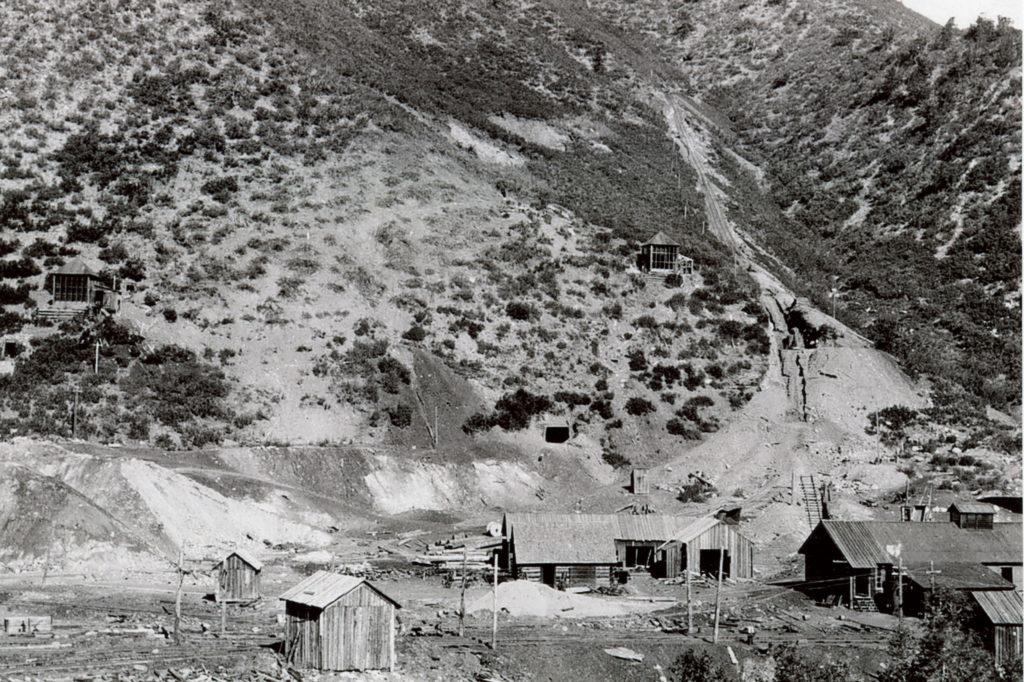
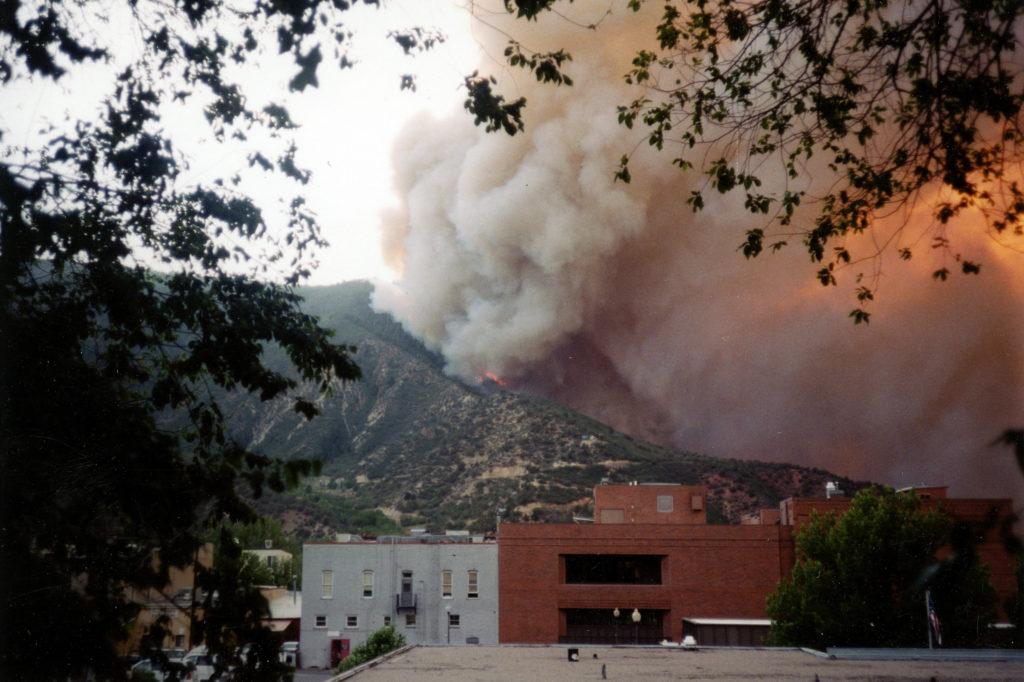
“There’s only a handful that really pose a threat to a population center or a large coal mine ... so those are the fires we’re focusing on at this time,” Tafi explains.
This summer, workers will begin using soil to smother a four-acre section of the underground mine fire in the South Canyon. They’ll use dirt like you’d use a blanket to try and put out the fire.
As they do their jobs, workers will have air monitors to keep tabs on the toxic fumes that the fires can belch near the surface, including carbon monoxide, carbon dioxide and hydrogen sulfide.
“It really smells bad and it will give you a pretty bad headache,” said Tafi, who’s inspected her fair share of underground fires.
Earth laced with rich minerals like coal, silver and gold is what attracted settlers to Western states, including Colorado, in the 1800s. They abandoned more than 1,700 coal mines. And they didn’t leave money to clean up the mess.
It’s a similar picture across other Western states like New Mexico.
The West Isn’t The Only Place Underground Fires Call Home
The Commonwealth of Pennsylvania has one of the most extensive coal mine reclamation programs in the country. While underground mine fires are just one aspect of keeping the public safe from historic coal mines, John Stefanko with Pennsylvania’s Active and Abandoned Mine Operations said it remains a priority.
“Mine fires are a small percentage of our program,” Stefanko said. “The majority of the work we do is associated with high walls that somebody could fall off of.”
But Pennsylvania is noteworthy because it had one of the most well-known underground mine fires in the country. Officials struggled to put out one fire in the 1980s and eventually had to relocate an entire town. Eerie pictures of Centralia show abandoned, spray-painted streets leading to nowhere.
Lately, Stefanko’s focused his sights on federal funding for coal mine reclamation, set to expire in 2021. The Surface Mining Control and Reclamation Act (SMCRA) is a lifeline for states like Colorado and Pennsylvania that have seen coal production decline, and yet still need funds to keep old mines from harming the public.
“It’s the sole source of funding for us to address our inventory of sites," Stefanko said. "But also allows us to address the emergencies that occur on an annual basis.”
Pennsylvania along with Wyoming created the site Our Work’s Not Done to raise awareness about Congressional reauthorization of SMCRA funds next year. As the climate warms, the need could grow for emergency projects. Pennsylvania saw a high number of unexpected projects due to a lot of freezing and thawing this spring.
In Colorado, Tafi says wildfires will only grow more extreme as temperatures warm across the state. That makes the work of stomping out some underground fires more important.
“So we focus here at this site on ... potentially trying to contain the fire. So getting around it,” Tafi said. “Unfortunately there’s no real cost-effective way to put this out short of mining the mountain to pull out burning coal.”

